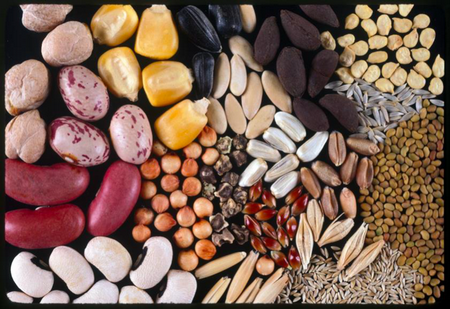It's getting close to the end of our summer gardening season. Now is the time to start thinking about next summer's garden. Do you have annual flower or vegetable varieties that did really well in your garden, and you'd like to grow them again next year?
Saving seeds to plant for a new crop is an ancient but simple and enjoyable process. In fact, it was routinely practiced until the 19th century when seed companies started to multiply. Seed saving is especially useful if the seeds for the item you want are hard to find. Additionally, it enables you to replant varieties that are well-suited to your garden's particular conditions.

Saving seeds from your own garden will start with seeds from the healthiest plants and produce that have the characteristics you want. You might choose the flowers that last the longest, or a vegetable plant that is most productive. You should also choose seeds from plants identified as “open pollinated” or “heirloom”. Seeds from hybrid varieties may not grow into plants even remotely like the variety you are growing.
Some plants such as tomatoes and most beans self-pollinate so their seeds will grow true to the variety. Others are pollinated by insects (e.g., squash and cucumbers) or wind (e.g., corn). If the original seeds are from open pollinated wind- and insect-pollinated plants, saved seeds may give unexpected results if there are other varieties of that vegetable or flower growing nearby. Flowers with easy-to-save seeds include calendulas, columbines, foxgloves, nasturtiums, poppies, sunflowers and zinnias.
Let seeds mature on the plant before collecting. This usually means leaving them longer than you would for good eating quality and letting some seed heads dry on the plant rather than deadheading. Determining when to harvest for seed saving is generally based on whether the seed is classified as wet or dry. Tomatoes, peppers, eggplants, and squash are examples of wet seeds. Wet seeds should be collected when the vegetable is slightly overripe. Beans and peas are dry seed plants. They should be harvested after the pods are fully mature and dry, and the beans or peas inside are hard.
After harvesting, there are three steps: cleaning, drying, and storing.
To clean wet seeds, separate them from the fleshy vegetable, rinse until they are clean, and spread them out to dry thoroughly. Dry them on a screen or a pan as the dried seed can be difficult to separate from paper towel or newspaper.
Some wet seeds, such as tomatoes, need another step before rinsing and drying. This mimics a natural process that lets beneficial microorganisms develop to remove a gelatinous coating on the seeds and destroy seed-borne diseases. Soak the seeds in their own juice (add about half as much water) for several days until a white mold appears. Swirl them daily. The viable seeds will sink to the bottom. Drain off the mold and anything floating, rinse the seeds well, and proceed with drying.
Cleaning dry seeds is easier. Dry seeds and pods are produced by beans, peas, lettuce, chives, most crucifers, and most flowers. After the pods or seed heads are fully dry, remove the seeds from their surrounding pods and membranes, also known as ‘chaff'. One method to remove the chaff is to rub the seeds against something mildly abrasive, such as a screen. Then, put the seeds in a jar; pour the seeds into another jar outside in the wind, or in front of a fan, and let the air carry the chaff away.
Make sure seeds are completely dry before storing. Store dried seeds in an airtight container in a cool place to avoid exposure to moisture and heat. Mark the container with the name of the plant, the date, and any notes on color, location, or size.
For more information on saving seeds, see these links:
• Beginners guide to seed saving: https://ucanr.edu/blogs/blogcore/postdetail.cfm?postnum=11597
• Seed saving basics: https://mgsantaclara.ucanr.edu/garden-help/how-to/seed-saving/
• Saving seeds of popular plants: https://mgsantaclara.ucanr.edu/garden-help/how-to/seed-saving/saving-seeds-of-popular-plants/
• Video: https://www.youtube.com/watch?v=edUwq0wMztM&t
• Book: What We Sow by Jennifer Jewell
Help Desk of the UC Master Gardeners of Contra Costa County (SEH)